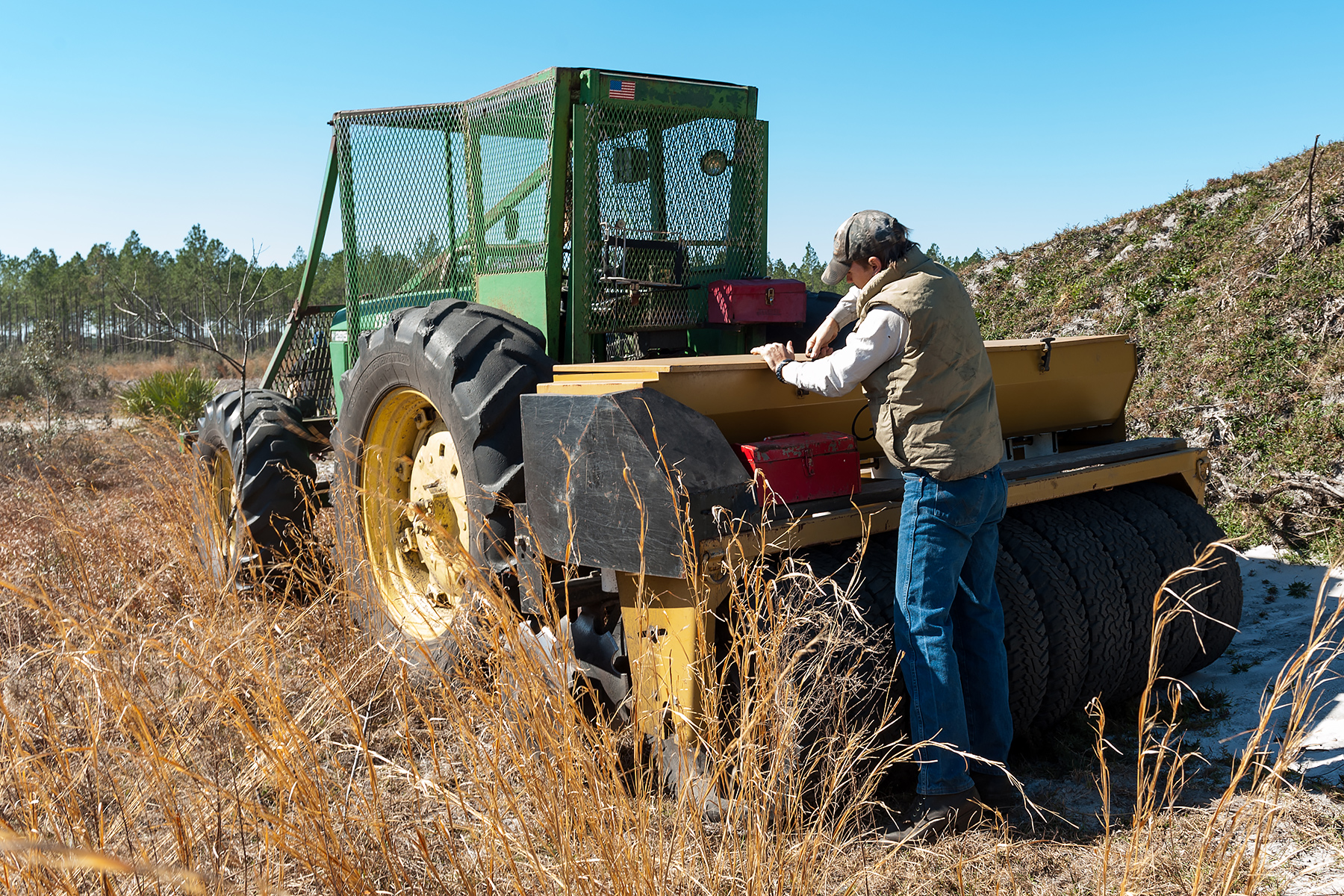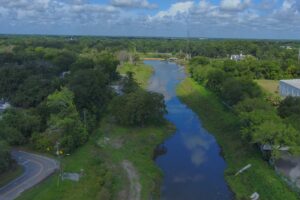The stewardship of sowing seeds
District propagates wiregrass to promote groundcover restoration projects.
Roughly 10 minutes northeast of the historic town of Micanopy, St. Johns River Water Management District Land Manager Chris Kinslow is helping a pale-yellow bunchgrass called wiregrass regain a foothold in Florida.
Kinslow and his team are transforming 20 acres of clear-cut land within the District’s 2,800-acre Longleaf Flatwoods Reserve into a “nursery” for wiregrass that, once mature, will produce seeds that can be sown on other District properties.
“A lot of public lands have gone through various changes prior to being preserved,” Kinslow says. “One of our missions is to protect and restore natural systems. As we acquire land to protect our water resources, we are presented the opportunity to restore those lands to a semblance of the old natural Florida.”
Wiregrass (Aristida stricta) was once common throughout the sandhills, pine flatwoods and prairies of Florida, but roads and rooftops took over the landscape, undisturbed tracts of wiregrass became harder to find. One way to help wiregrass re-establish is with prescribed fire.

One of our missions is to protect and restore natural systems. As we acquire land to protect our water resources, we are presented the opportunity to restore those lands to a semblance of the old natural Florida.
Frequent fires were good for Florida prior to development, keeping the shrubby species in check, helping other native plants flourish and reducing the intensity of wildfires. In undeveloped Florida, fire was a regular occurrence. A bolt of lightning would ignite the woods and the land would burn until the blaze fizzled out at the edge of a river or a wetland. However, in areas where land has been disturbed by development, native groundcover species such as wiregrass, are oftentimes negatively impacted.
“Regularly burned wiregrass communities burn with a low intensity,” Kinslow says. “When we burn fire-adapted communities regularly, we don’t eliminate the chance for a wildfire, but it does reduce the intensity of a wildfire if one occurs.”
District land managers are skilled practitioners in the art of prescribed fire. They also understand the importance of restoring ecosystems on District lands to their fullest potential — sometimes with a new twist.
Sowing District-managed uplands with wiregrass seeds is nothing new. District land managers have worked with partners, such as the University of Florida, to share seed from other Florida properties since the early 2000s. However, restoring wiregrass at Longleaf Flatwoods Reserve will produce a higher quality seed, Kinslow says.
“We’re getting a better product,” he says, “The fresher the seed, the better; the more local the better.”
The planting site is a mostly barren former sandhill cleared of its slash pine canopy. Here, District Land Management Specialist Kyle Madden guides a John Deere tractor across the open range, distributing the fluffy wiregrass seed from a hopper attached at the rear of the tractor. Plump wheels aft of the tractor press the seed into the earth to ensure the seed will have a good chance to germinate and take root.
Kinslow watches the tractor make a pass. He says his uncle harvested prairie grass seeds as a boy growing up on a farm in North Dakota back in the late 1940s and 50s using the same methods of collection. He explains that the mature grass will provide essential cover and habitat for quail, rabbits, turkeys and other species.
The District’s main thrust for the project, however, is to ensure the land is maintained at its highest level for protecting Florida’s water resources, he says.
“As you can see, this is a large sandy area,” Kinslow says. “This area is ideal for recharging the aquifer and therefore plays into our core missions of protecting and restoring natural systems, water quantity and water quality.”
The District has seeded about 50 acres of land with wiregrass since 2015. Kinslow estimates that the 20-acre “nursery” will provide enough seed for about two acres of wiregrass coverage each time it is burned. The seeds will germinate in the early spring and within two to three years the wiregrass clumps will be large enough to carry fire and produce their own seeds. Normally, on a project like this, the next step after a successful establishment of the groundcover, the District would plant longleaf pine seedlings. But because this site is to serve as a source of seeds for future harvests, the pine canopy will be left off this site. This makes is much easier to collect the seeds in the fall.
Kinslow provides a living example of the District’s success in growing wiregrass by driving across the street to the District’s Lochloosa Wildlife Conservation Area. He navigates his truck along a dirt road to an area of sandhill where acres of wiregrass stand sentinel like fountains of gold.
“This is four years after planting,” he says with pride. “We’ve also collected seeds off this land for other restoration areas. Slowly this area will look like it did 100 years ago.”






